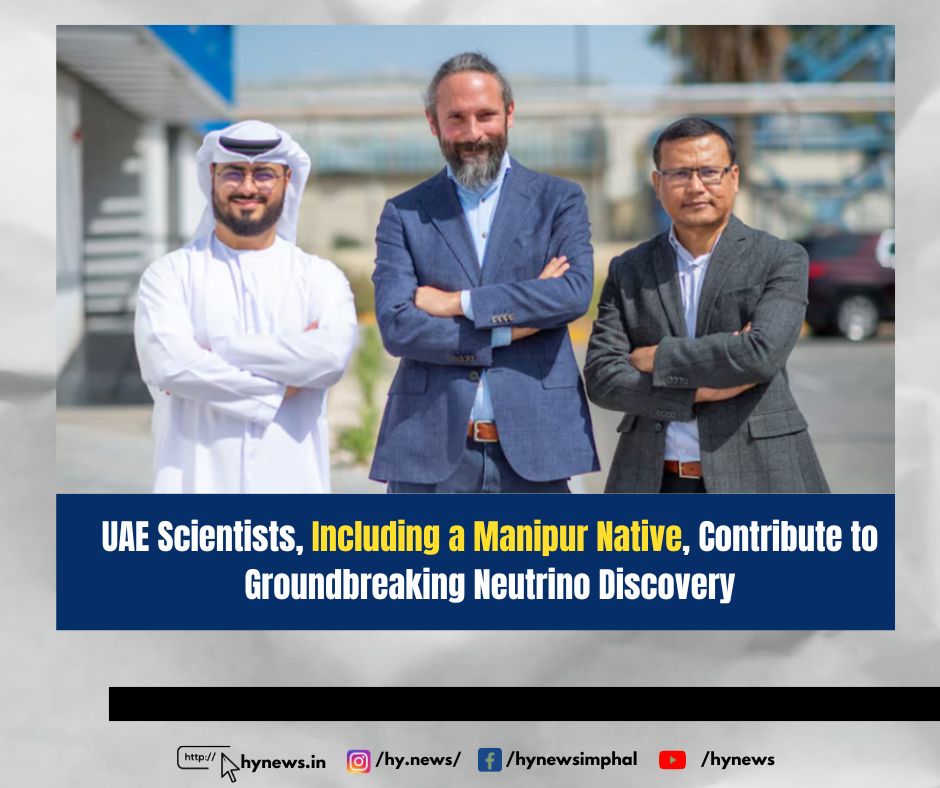UAE Scientists, Including a Manipur Native, Contribute to Groundbreaking Neutrino Discovery

Scientists in the UAE have played a pivotal role in a major astrophysics breakthrough, reshaping how experts perceive the universe. Researchers from Khalifa University in Abu Dhabi contributed to the identification of an ultra-high-energy neutrino—dubbed a "ghost particle"—with energy levels 30 times higher than any previously detected.
The discovery was made possible through data collected by the Cubic Kilometre Neutrino Telescope (KM3NeT), stationed deep in the Mediterranean Sea. This revelation, published in the journal Nature, marks a significant milestone in astrophysics.
A New Era in Astrophysics
The finding comes as the UAE strengthens its position as a key player in space research, with a surge in interest among local scientists and students. Dr. Satyendra Thoudam, an assistant professor in Khalifa University’s physics department and part of the KM3NeT project, highlighted the significance of the discovery.
“This is the first time we’ve measured the highest-energy neutrino, which carries energy equivalent to 100 million billion times that of visible light,” Dr. Thoudam explained. “It has opened a new window on the universe and provides a new way to study ultra-high-energy cosmic rays and their journey through space—one of the most fundamental problems in astrophysics.”
The Role of Neutrinos in Space Exploration
Neutrinos, which have minimal mass and no electrical charge, are known for their ability to pass through matter undetected. Unlike protons and electrons, which are absorbed by water, neutrinos generate Cherenkov light when they interact, allowing the KM3NeT telescope to detect them.
Located 40km off the French coast, the KM3NeT project remains under construction but is expected to facilitate the detection of many more high-energy neutrinos in the future. By analyzing the Cherenkov light, scientists determine the energy levels and origin of these elusive particles, which may have been produced by extreme cosmic events such as supernovae or black holes.
UAE’s Growing Space Research Ambitions
The KM3NeT collaboration involves over 350 scientists from institutions across 20 countries. Khalifa University joined as an observer partner in 2021 before achieving full membership in 2023. Since then, its involvement has deepened, with researchers like Dr. Thoudam leading contributions to the project.
Astrophysics research is rapidly expanding in the UAE, bolstered by initiatives from the UAE Space Agency and leading universities. Emirati PhD student Abdulrahman Alhebsi, 25, is part of the KM3NeT project, using advanced programming techniques to analyze astrophysical data. Inspired by childhood discussions with his father about the vastness of the universe, Alhebsi pursued studies in astrophysics and theoretical physics in the UK before returning to the Emirates.
“There is a lot of interest in space research among students,” noted Dr. Arjen van Vliet, an assistant professor at Khalifa University. “We have large student groups, physics and astronomy clubs, and field trips for stargazing. Government support for space science has been instrumental in fostering this enthusiasm.”
UAE’s Expanding Space Endeavors
The UAE’s ambitious space program continues to make headlines. From the successful launch of the Hope Mars orbiter to future plans for asteroid belt exploration, the nation is cementing its status in global space research. Emirati astronauts Hazza Al Mansouri and Sultan Al Neyadi have already ventured into space, and officials from the Mohammed bin Rashid Space Centre have expressed ambitions to send an Emirati astronaut to the Moon within a decade.
As the commercial space sector expands, with companies like SpaceX and Blue Origin dominating headlines, the UAE is positioning itself as a formidable player in the field. With groundbreaking discoveries like the ultra-high-energy neutrino, the country is set to play an even greater role in the exploration of the cosmos.




































Leave Comments